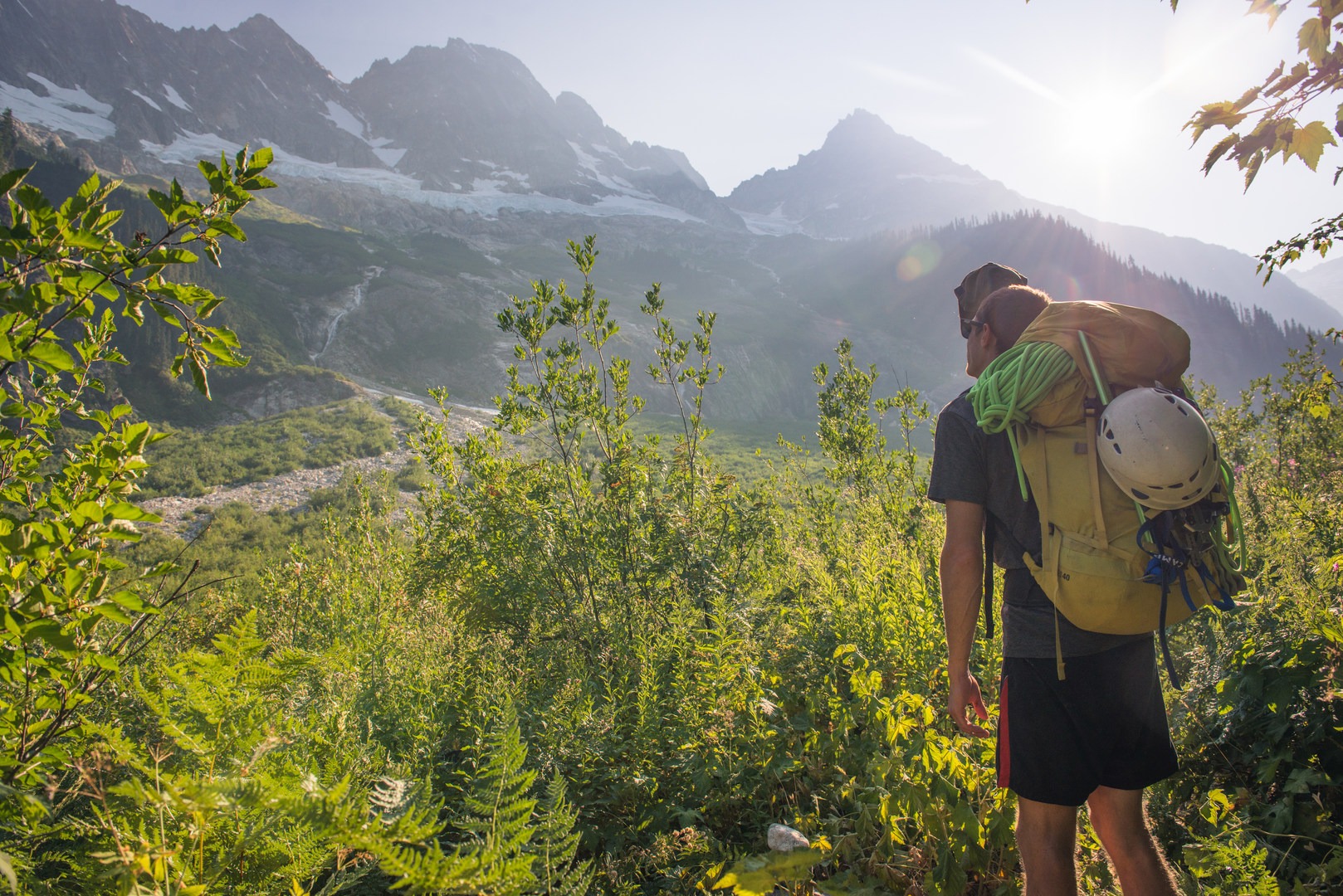You are here
Mount Goode (pronounced Good-E) is the tallest peak in the North Cascades National Park at 9,199 feet. Due to it's remoteness, it's the only prominent peak in Washington that cannot be viewed from a road, and even with reputation as a classic alpine route in Washington, you'll often find yourself alone for the majority of the climb.
There are two popular ways to access the Northeast Buttress of Mount Goode. Climbers can use the Bridge Creek Trailhead on the North Cascades Highway, which features a longer approach but less logistics, or access from Stehekin, which has more logistics but a shorter approach and quicker access to burgers and beer post-climb.
Both starting points feature moderate trail travel with a few creek crossings. Once on the North Fork of Bridge Creek Trail, the trail becomes more rustic and becomes overgrown for the last mile or so before crossing the North Fork of Bridge Creek to begin the scramble up to a bivy between 5,200 and 5,400 feet.
Thick alder guard the alpine meadows high on Mount Goode, but with some luck you'll find the "Alder Tunnel" that allows relatively pain-free passage into the alpine. Take the looker's right on the left-most waterfall after crossing the North Fork of Bridge creek, Class 3-4. After popping out of the Alder Tunnel, bivy locations can be found starting at 5,200 feet.
The receding glacier above is small but active. It's not uncommon to hear icefall throughout the day. Late in the season the glacier moat to get on-route can be tricky.
Once on the the rock, traverse toward the looker's right to the arete. This usually involves one or two pitches of mid-Class 5 climbing. Once on the Northeast Buttress proper, the thousand feet or so of Class 3-4 climbing becomes visible.
As the route steepens, most parties will begin to pitch the remaining route out. Climb the arete, always staying within approximately 25 feet. The rock is solid, the views are dramatic, and the exposure is wild. After a few pitches (with a 70-meter rope), the arete begins to merge with the gully on the right. This is the main bivy ledge, so stop here if you can't make it to the summit by nightfall. There are a handful of bivy locations above, but none as comfortable as the bivy ledge.
From the bivy ledge, follow the right arete up three 70-meter pitches to Black Tooth Notch. From here you'll have two more pitches to the summit.
The descent consists of left-leaning rappels down to Black Tooth Notch, then a traverse pitch running left to get to the rappel slings. Two rappels get you into the chossy southwest coliour. Once out on the apron of the coliour, trend to the looker's right and find cairns to get you onto a climber's path down to Park Creek Trail.
Logistics + Planning
Current Weather: Powered by Dark Sky
























Comments
Sign In and share them.